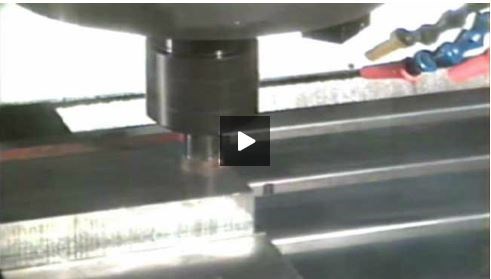Average Chip Thickness: What It Is and Why You Should Care
During milling applications, chips that are too thin might indicate inadequate heat dissipation that can cause premature insert wear. Too thick, and cutting forces might be high enough to break inserts outright. Cutting parameters should be set to attain a middle ground.
Share





A good machinist is somewhat like a soothsayer, except the tools of the trade in this case are metal chips rather than bones or tea leaves. Yet according to ’ Todd Miller, even those who understand the wealth of knowledge that can be gained from examining the shavings left over from a milling operation often overlook one key factor: the importance of average chip thickness.
As indicated by the video above, the results of attaining the correct average chip thickness for a particular insert speak for themselves. The first cut is a full slotting application—that is, 100 percent of the tool diameter is engaged. Each subsequent cut reduces the tool’s engagement. Note that the sound generated by the cutting action is virtually indistinguishable at every level below 100 percent. That’s because cutting parameters have been set with the goal of maintaining the same average chip thickness regardless of radial engagement.
Mr. Miller says aiming for that goal can go a long way toward alleviating problems with premature insert failure, poor surface finish, work hardening, vibration or deflection. Here’s why.

Related Content
-
Quick-Change Tool Heads Reduce Setup on Swiss-Type Turning Centers
This new quick-change tooling system enables shops to get more production from their Swiss turning centers through reduced tool setup time and matches the performance of a solid tool.
-
Shoulder Milling Cuts Racing Part's Cycle Time By Over 50%
Pairing a shoulder mill with a five-axis machine has cut costs and cycle times for one of TTI Machine’s parts, enabling it to support a niche racing community.
-
Custom Workholding Principles to Live By
Workholding solutions can take on infinite forms and all would be correct to some degree. Follow these tips to help optimize custom workholding solutions.













